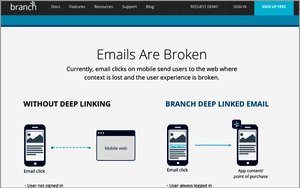By David Somers

Frontline workers are the heartbeat of your organization—the people behind the counter, on the phone, and running day-to-day operations. They are the first to represent a brand and engage with clients, and their interactions have a huge impact on how customers perceive a company. Yet, frontline, hourly, and shift workers have rarely experienced the flexibility and long-term talent development their back office counterparts have come to expect. As a result, a record number are leaving their jobs.
In February 2022, 4.4 million workers quit their jobs, which is 100,000 more than in January 2022 and just shy of the 4.5 million record set in November 2021. Leisure and hospitality workers continue to face the highest quit rates of any industry, with nearly 1 million workers leaving their roles in November 2021 alone. Further, according to a new February 2022 research from a report on grocery workers, 48% of retail workers considered quitting their job in the past year.
This dramatic labor shortage is driving new worker expectations, presenting opportunities for organizations to rethink how they engage with their frontline workers.
In today’s world, employees are not only rethinking how they work, but why they work, and are re-assessing their career goals to do what they love at companies that support them and invest in their growth. Attracting frontline talent and delivering meaningful experiences hinges on an organization’s ability to listen to their employees, understand how they’re feeling, and then use these insights to meet workers’ evolving needs and expectations. Here are three steps organizations can take to invest in the growth of today’s frontline workers.
1. Give control over schedules
Once thought of as a perk, flexibility has now become table stakes, among other requirements—from the corporate employee to the frontline worker. The global pandemic inspired employees to prioritize greater work-life balance, and because of the ongoing labor shortage, workers have the leverage to demand it.
Flexibility is no longer just about hours or location; it includes giving employees influence over when they work using technology that enables them to manage and adjust their schedules based on their unique and changing needs. Some employees may be parents or caregivers who need to change shifts to accommodate their family’s needs, or some may be students who are looking to pick up night shifts. It is critical to understand the different contexts of your workforce and empower your employees to work when it fits their schedules.
The evolving nature of schedules for frontline workers—where employees are often called in for a shift on short notice or be asked to work extra shifts to cover the holiday rush–makes flexibility and the ability to manage their schedules even more important in helping to support and retain them.
2. Invest in long-term development
One of the top reasons employees leave a company is a lack of career growth, with 94% of employees saying they would stay at a company longer if it invested in their development. That’s why we’re seeing more organizations approach talent with a growing focus on skills–where workers are valued and rewarded for their skills rather than for their title, level, or educational degree. When employees feel like they have opportunities for career mobility and building new skills, they feel more connected to their work and are more likely to stay at a company.
By understanding the skills of your organization, leaders can uncover any skills gaps and recommend personalized gigs, or short-term assignments, to workers that leverage their strengths and help provide advancement opportunities.
For example, a retail organization might discover that an employee who is currently working at the cash register has strong interpersonal skills. Using these insights, the retailer can match that worker with relevant jobs—such as working the customer service department–content, and learning opportunities that can further develop this skill and advance their career.
It’s really about dynamically matching workers to opportunities using skills as the doorway to greater agility, for both workers and the business.
3. Employees need to feel heard
An engaged, productive, and supported workforce is the backbone of a good business. Gone are the days of creating employee experiences based on what is believed or assumed employees want. Employees want experiences that support and take into account their unique and changing needs.
To deliver experiences that matter, business leaders need to understand the evolving preferences and needs of employees, and make sure their voices are heard. To do this, organizations can offer all employees a confidential platform to share honest feedback about their experience, health, and well-being—and then use these insights to take meaningful, tangible actions that enable employee satisfaction and success.
For example, at my company, Workday, we use a continuous listening platform to understand and engage with our employees, helping us uncover insights such as how they’re feeling about returning to the office. The input we’ve received from employees has influenced and helped shape our employee experience in a hybrid world—from our return to office timing to social gatherings and events policies.
By continually engaging with and understanding how employee sentiment is shifting in real time, people leaders can shift and make adjustments when it matters most.
The labor challenges among frontline workers is not a blip on the radar. Those organizations investing solely in short-term tactics and not investing in their workers’ long-term growth and development will not be equipped to compete for talent down the road.
Frontline workers have been integral to the global pandemic response and essential in helping keep the economy in motion. Now is the time for organizations to listen to their employees and show you’re invested in their growth for the long-term.
David Somers is a leader in the office of the chief human resources officer at Workday, which offers enterprise cloud applications for finance and human resources.
Fast Company , Read Full Story
(29)
Report Post




